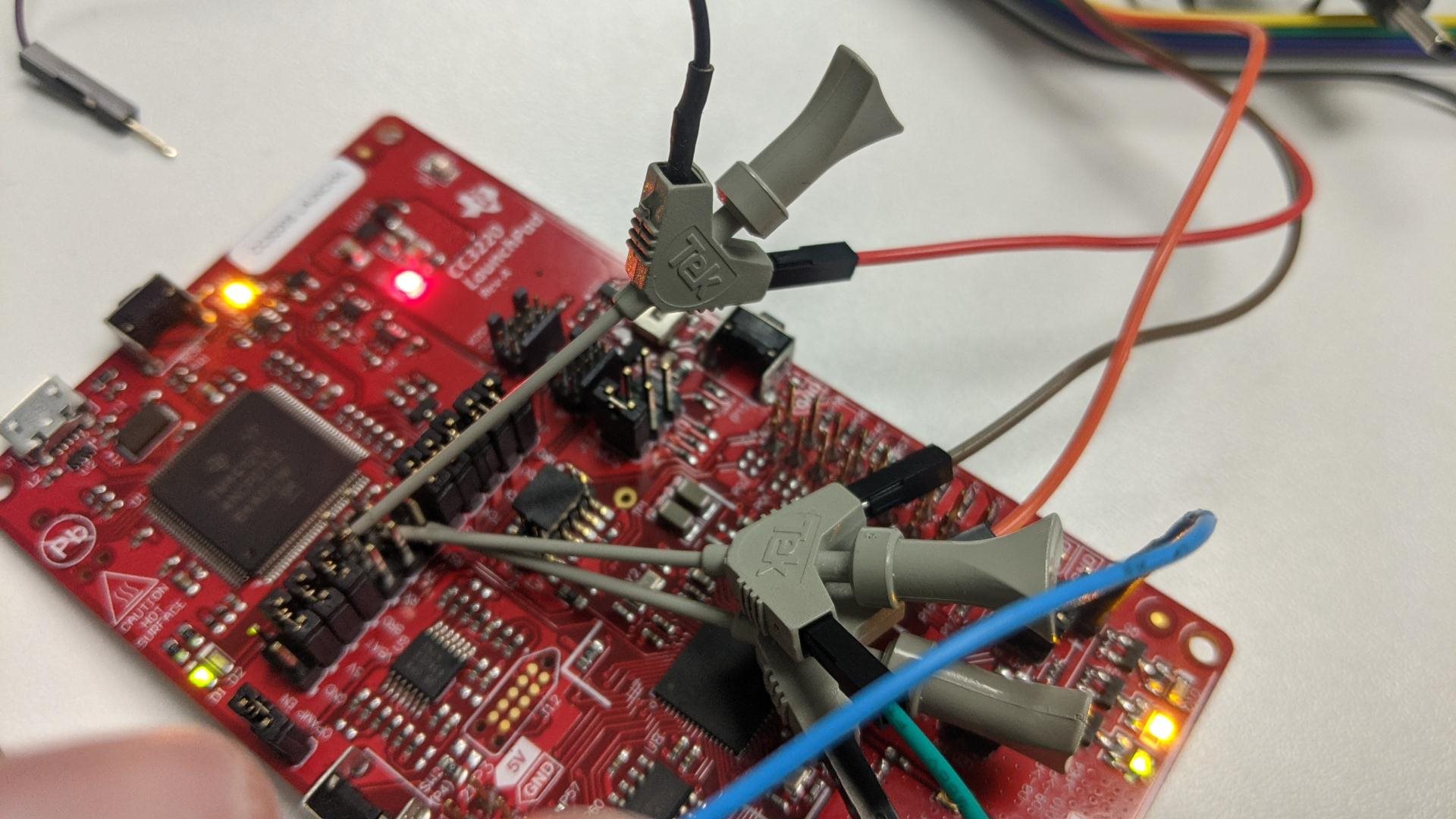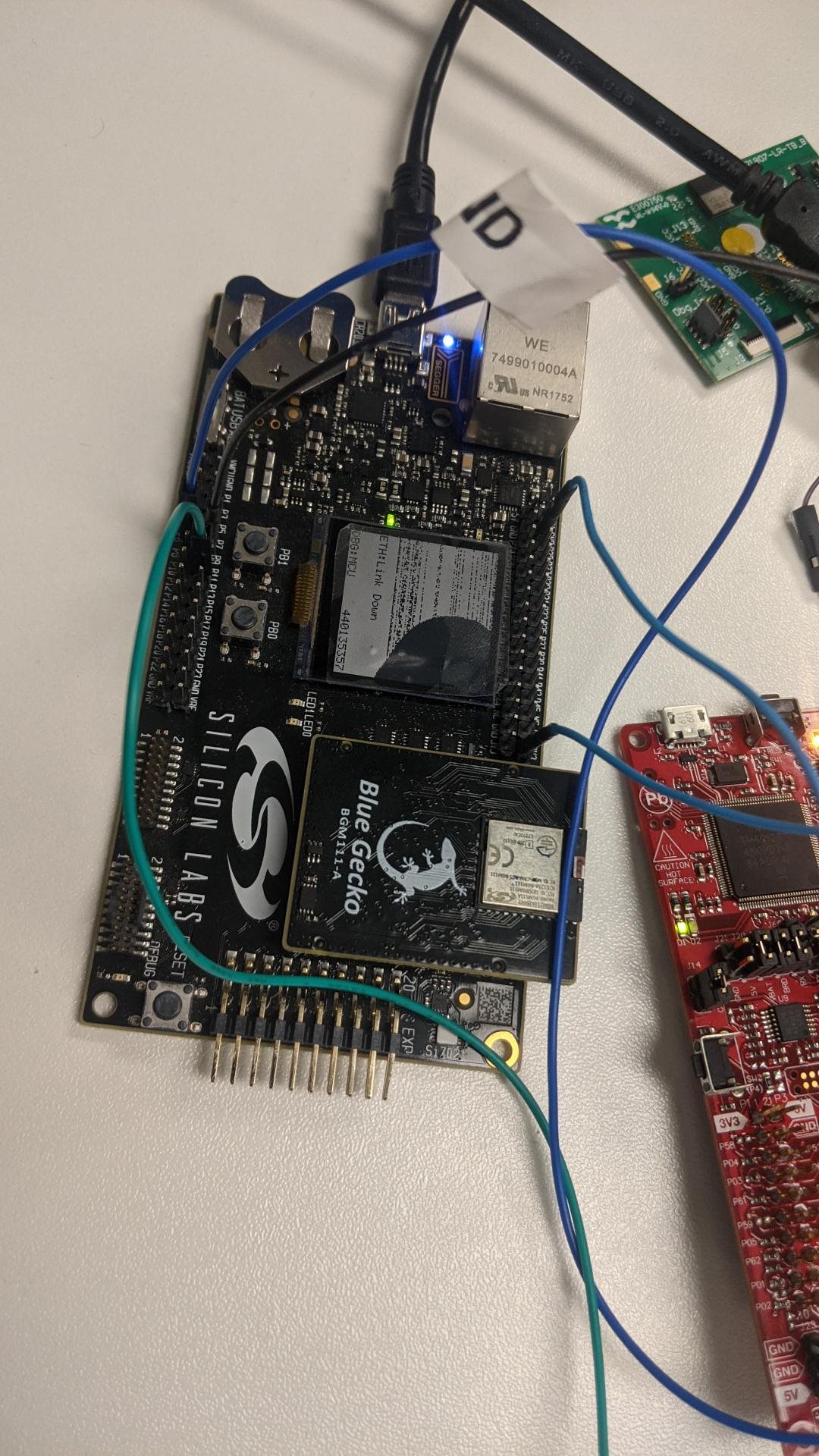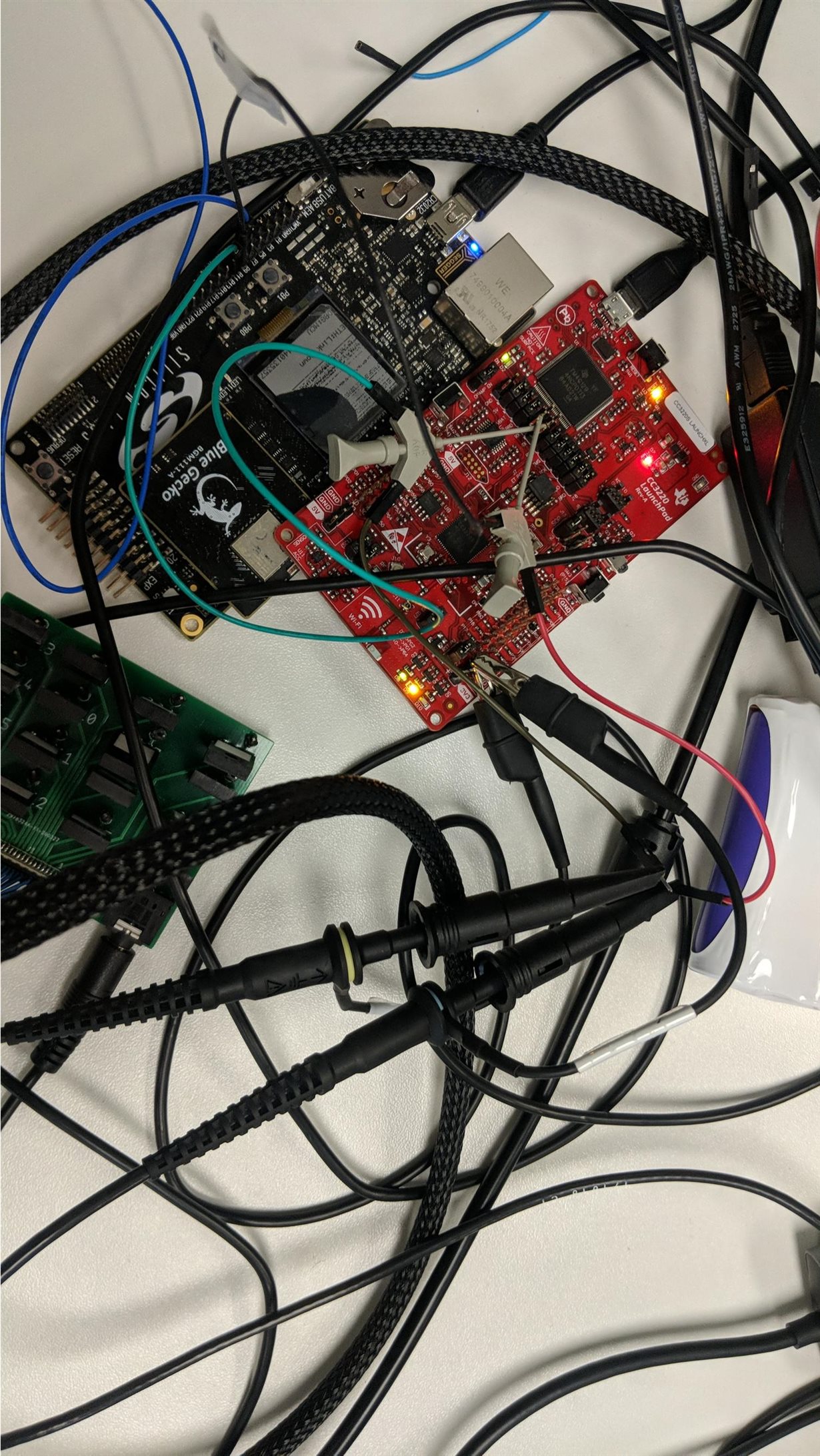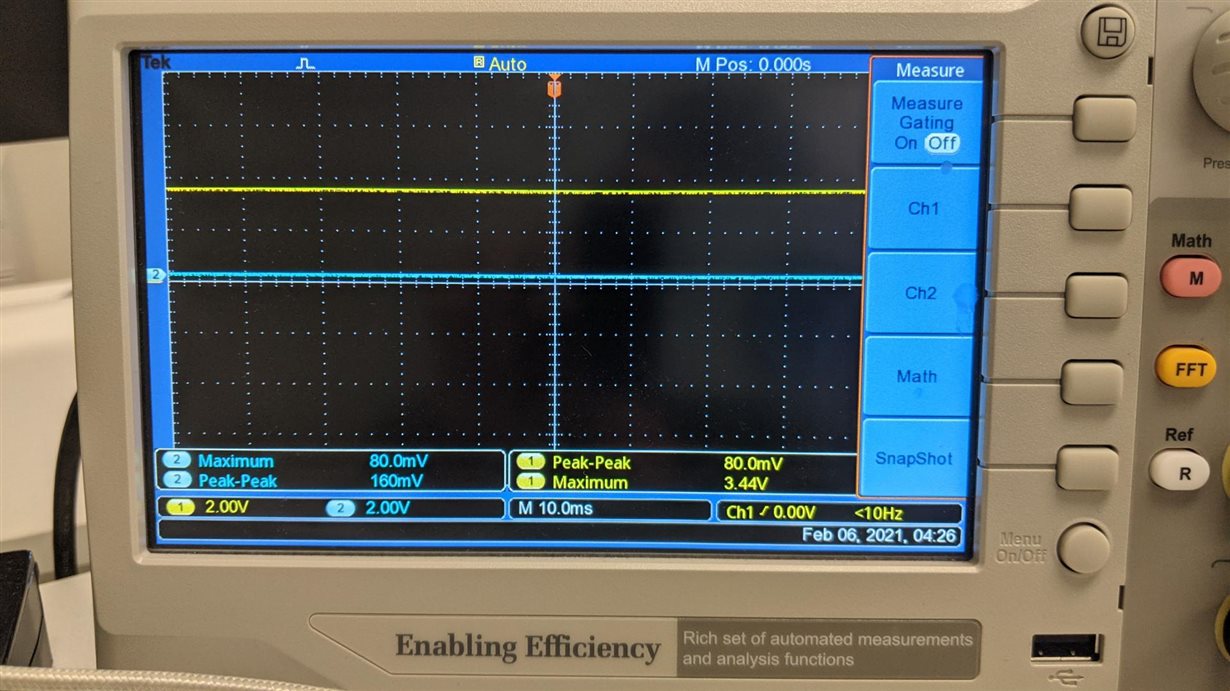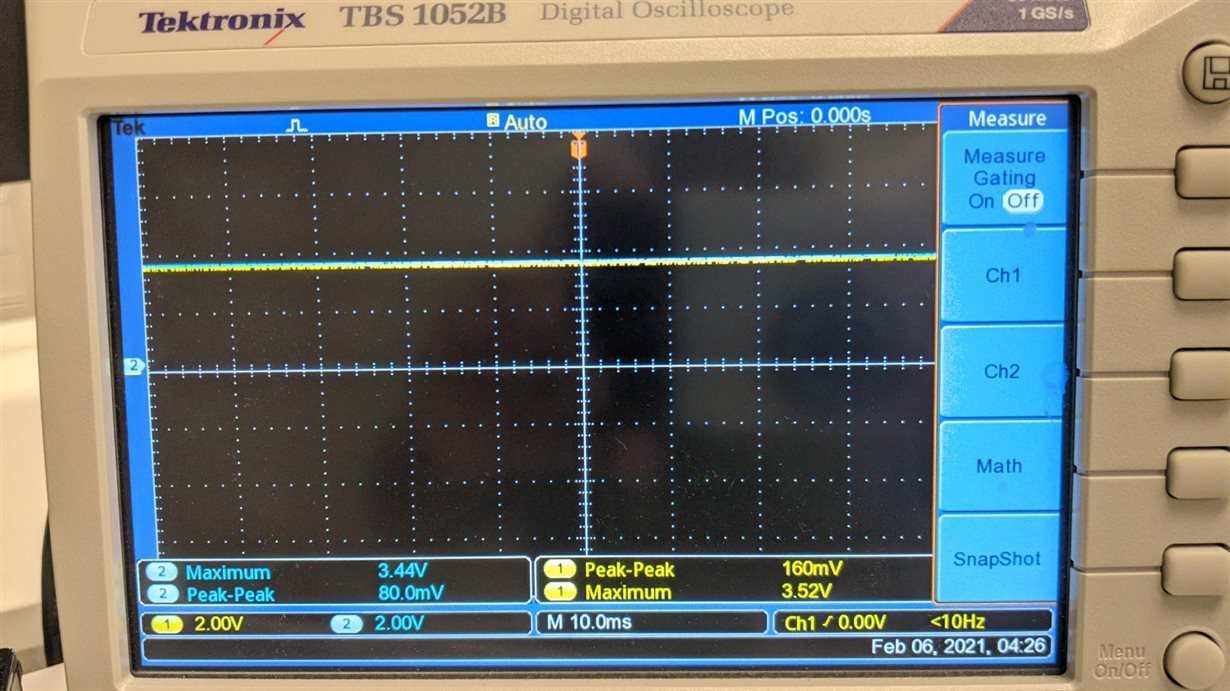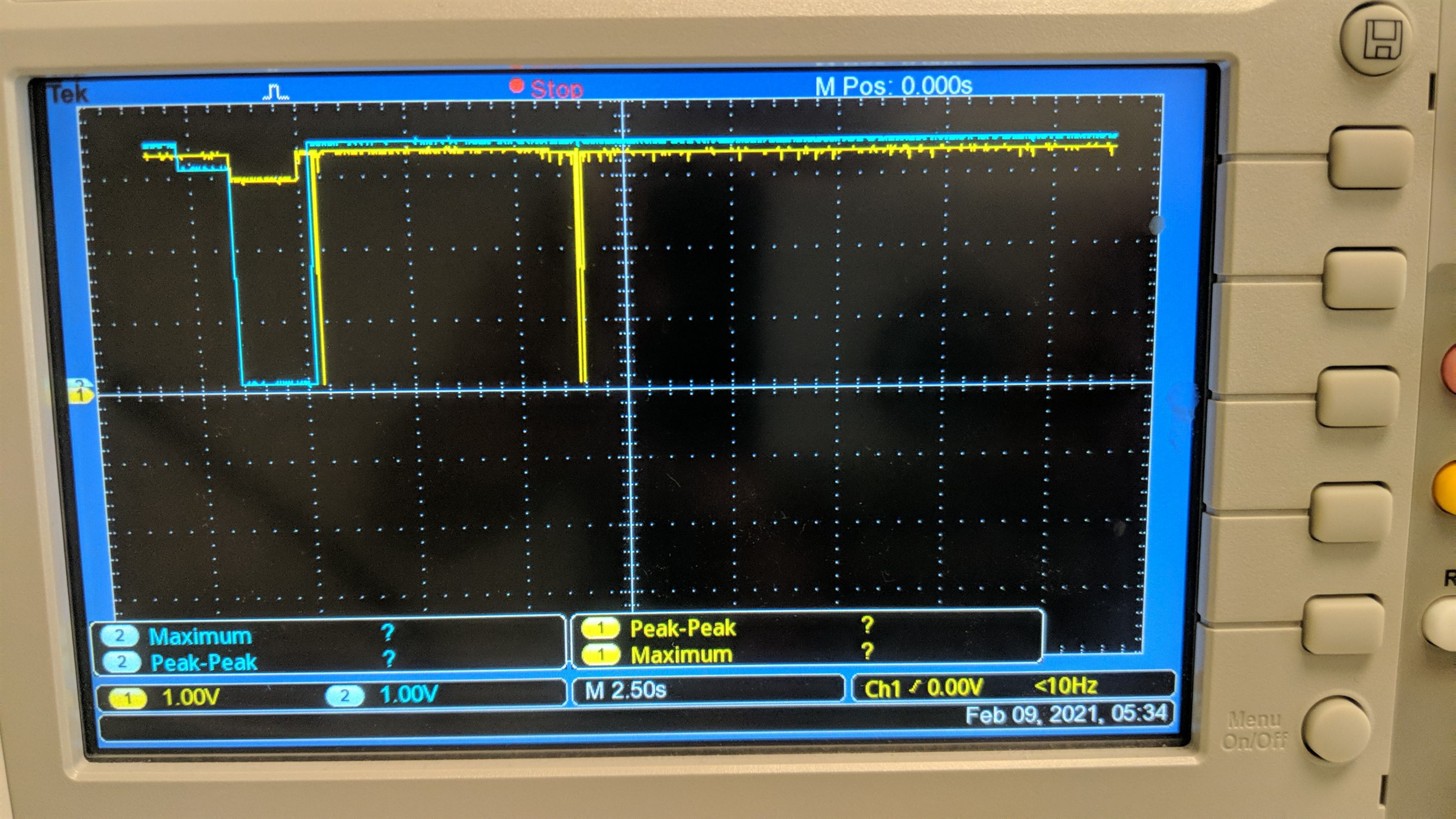Other Parts Discussed in Thread: CC3220S, UNIFLASH
Hi,
I am currently trying to program the CC3220S on the CC3220SLaunchXL board using a BGM111. My connections between the launchpad and BGM are the following:
BGM --> CC3220S
UART RX -> UART_Tx (J5 Tx, middle pin)
UART TX -> UART_RX (J6 Rx, middle pin)
nReset pin -> nReset (J3 bottom pin (towards the cc3220s mcu))
SOP connections are:
1(2)-0(1)-0(1)
On the BGM side I wrote code to toggle the nReset pin, while I held the RX pin in reset for a bit. I know I am supposed to see a 0xCC, an ack command, on the TX pin but I am not seeing this. I also tried to send multiple different commands to see if there was any response but I still didn't notice anything. I have attached a screen shot of it the logic file for reference. Any help is really appreciated!
Btw, The UART setup is using 921600 baudrate.
Thank you!
Vasav
(The image says SF but its because I forgot to change the name...


